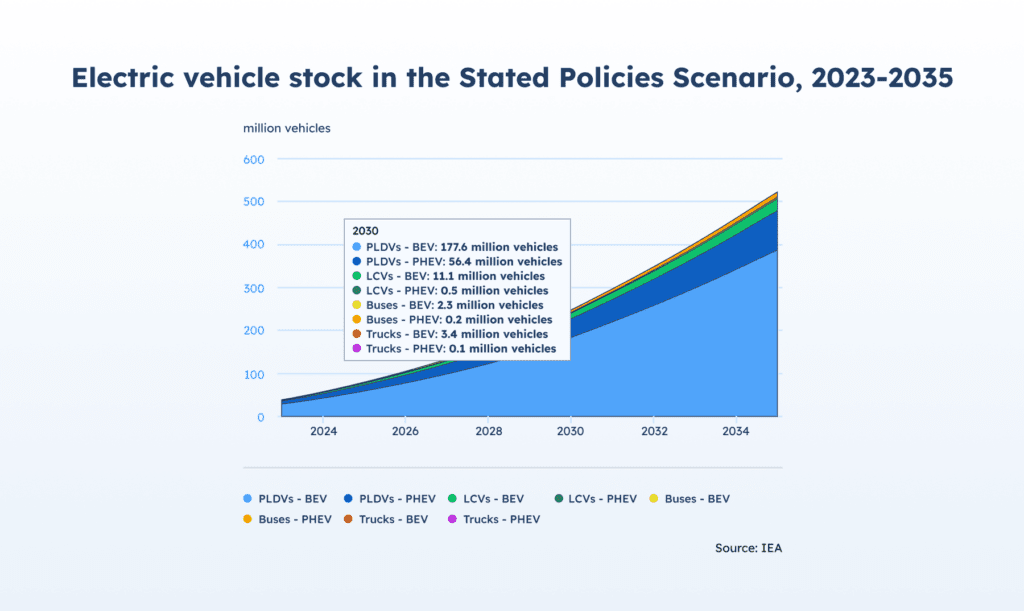In September of 2024, AMPECO’s Head of Sustainability, Petar Georgiev, and Georgetown University’s Director of Programs and Strategic Relations, Maria Petrova, PhD published a joint opinion on how to integrate equity into transportation electrification and EV charging infrastructure, in particular. The joint opinion was exclusively published in the influential sustainability portal Illuminem. Find a link to the article here. Here are AMPECO’s key takeaways from the joint opinion.
Sustaining the growth of EVs sold around the world will require the adequate rollout of recharging infrastructure—on public roads, in commercial buildings, at fleet depots, and at home.

In terms of equity, there are two aspects that need to be considered to establish a shared understanding of the current landscape for the equitable distribution of benefits for transportation electrification.
- the ability to purchase an electric vehicle
- the ability to charge an electric vehicle
Ensuring that all major groups and the vast majority of people in a society have these abilities is what will make the transportation electrification transition possible. While vehicle affordability is an important aspect in terms of equitable distribution, the joint opinion focused on what happens after the purchase of the EV.
Equity in EV charging
The ability to charge an electric vehicle is dependent on several factors, which require complex solutions, many of which are part of or directly enabled by a Charge Point Management System, like AMPECO. At its core, it is all about accessing charging infrastructure easily.
There are the following features of charging infrastructure that define its accessibility:
Location: In many cases, charging infrastructure is disproportionately distributed across cities and regions. The US is a good example, where historically, redlined communities have long borne the burden of transportation policies that put them at higher risk of health disparities.
Type: there are two main types of chargers – home and public chargers. According to the IEA, currently between 70 and 85% of EV charging happens in homes, with this number expected to be ~50% in the near future, with many being dependent on on-street charging. This underscores the importance of making public charging infrastructure fully accessible to EV drivers.
Payment options: More payment options make charging more accessible and easy to use, e.g., in-app payments, payment terminals on the charger, vouchers, subscriptions, etc.
Physical access: accessibility to charging for disabled people makes sure this societal group is served. According to the Motability study in the UK, by 2035, up to 50% of all drivers or passengers with a disability are expected to be partially or wholly reliant on public charging infrastructure, which makes the case for public charging infrastructure to be made accessible to people with a disability.
Pricing: If more affordable electricity prices are available to EV drivers, it will become more accessible to economically vulnerable groups. For example, AMPECO’s charge point software can enable all kinds of flexible (smart) pricing offered by energy market players, e.g. Octopus in the UK and Nordpool in the Nordics.
Language: It is important to understand the interface through which EV charging is consumed—whether a mobile app or the charger itself. This also includes multilingual EV driver support in case the infrastructure is troubleshooting. For example, AMPECO’s platform currently supports 37+ languages.
Measuring success
Studies by Smart Electric Power Alliance and Forth Mobility guide the type of data needs to be monitored and measured in order to frame programs and succeed in addressing the equity issues mentioned above.
In summary, there are three groups of metrics:
- Target population identification metrics, such as: energy cost index, energy burden index, late payment index, household human development index, etc.
- Investment decision-making metrics, such as: community acceptance rating, energy use impacts, energy quality, investment generated jobs, etc.
- Program impact assessment metrics, such as: energy savings, energy cost savings, energy burden change, etc.
As a member of these two non-profits, AMPECO works with its partners to ensure the proposed approaches are applied in existing and newly deployed EV charging projects.
Taking Action
Taking action is needed to address equity in the electrification of transportation. Therefore, the joint opinion article offers four general policy recommendations, the application of which will require a custom approach, depending on the circumstances.
Establish charge point geographic distribution rules to ensure that no communities are put at a disadvantage. This should include areas with high proportions of renters, lower-income households, and historically redlined communities. Additionally, incentives such as grants or tax credits can be offered to CPOs that install chargers in these locations to ensure equitable access.
Adopt requirements on inclusive charger features for disabled people. Examples can include different language and payment options, customizable tariffs, dynamic fonts, text-to-speech, two-factor authentication, tailored color contrasts, email login options and more.
Promote flexible and transparent pricing models that empower consumers. This approach can extend to providing smart energy management rates that reflect local income levels and energy consumption patterns. Transparent pricing mechanisms should be implemented to allow drivers to make informed decisions about when and where to charge their vehicles.
Implement data monitoring mechanisms that analyze usage, distribution, and accessibility of EV charging infrastructure. This mechanism will also guide charging infrastructure investment decisions and measure success. Support should also extend to troubleshooting services, ensuring that language barriers do not hinder access to EV charging.
Conclusion
In conclusion, social equity and the climate transition are deeply intertwined when it comes to the electrification of transportation. An equitable transition is a more affordable energy transition (when dynamically adjusted prices for charging per user group are used, for example).
Properly addressing equity also provides more business opportunities for value chain businesses, which is an additional incentive to do this.
Ready to see how equity can make a difference for your business? Take the next step toward inclusive eMobility. Our experts are here to help you create equitable and accessible EV charging solutions.